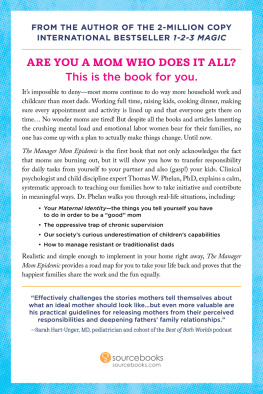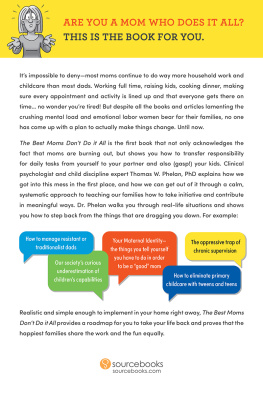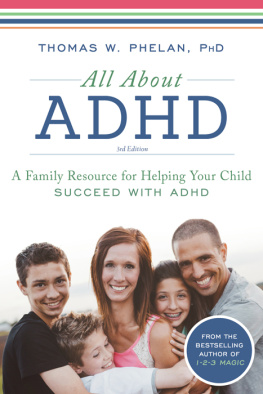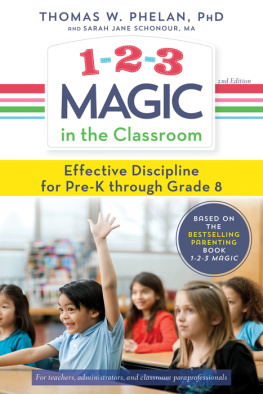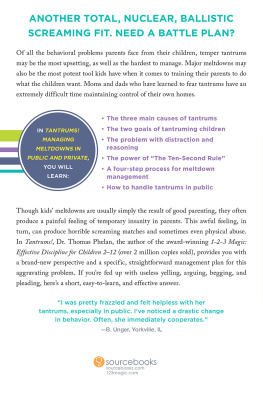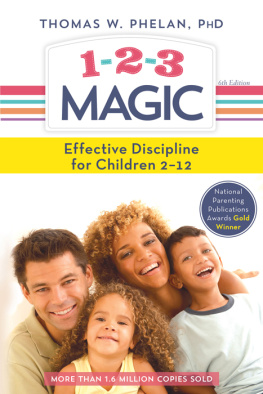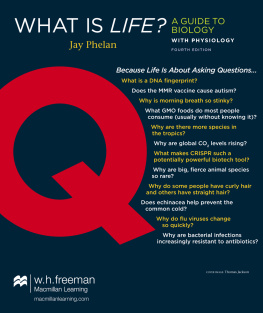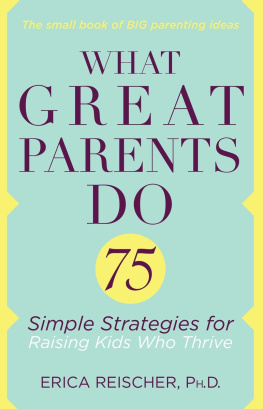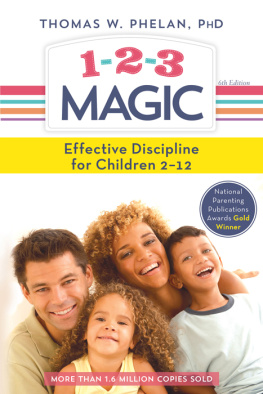Copyright 2020 by Thomas W. Phelan, PhD
Sourcebooks and the colophon are registered trademarks of Sourcebooks.
All rights reserved. No part of this book may be reproduced in any form or by any electronic or mechanical means including information storage and retrieval systemsexcept in the case of brief quotations embodied in critical articles or reviewswithout permission in writing from its publisher, Sourcebooks.
This publication is designed to provide accurate and authoritative information in regard to the subject matter covered. It is sold with the understanding that the publisher is not engaged in rendering legal, accounting, or other professional service. If legal advice or other expert assistance is required, the services of a competent professional person should be sought. From a Declaration of Principles Jointly Adopted by a Committee of the American Bar Association and a Committee of Publishers and Associations
This book is not intended as a substitute for medical advice from a qualified physician. The intent of this book is to provide accurate general information in regard to the subject matter covered. If medical advice or other expert help is needed, the services of an appropriate medical professional should be sought.
P.O. Box 4410, Naperville, Illinois 60567-4410
1
And the World Turned Upside Down
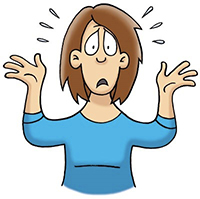
Over the last few weeks, this is how most of us feel. Daily life as we knew it seems to have vanished. Were suddenly confronted with a deadly virus that has killed thousands of people around the world. There seems to be no stopping COVID-19, a blind, brainless, and emotionless killer that seems to pop up wherever it wants to.
Local schools have closed. College students from both the United States and other countries have been sent home. Professional and college sports have vanished. You can no longer sit down in a restaurant or go to the movies. The stock market seems to have no bottom.
What you can do, however, is remain stuck home with your family in a semi-quarantined state. You may have work to do (now from home) for your job, and your children will have virtual schoolwork to do from their teachers (who now have academics to manage but no more classroom discipline!). You can now sit and worry about the health and safety of friends and relatives all over the place. You can be bombarded with bad news of new outbreaks of corona and increasing death tolls from all over the world.
The result is a sickening, depressing sense of anxiety and helplessness.
The Coronavirus Manual for Parents
But we have to keep going. Leaving the planet is not an option. Through all this turmoil, we want to feel as good as we can, and we want to help our families feelrealisticallyas good as they can. The bottom line is the emotional and physical well-being of those we love and of ourselves.
So Im going to stick my neck out and offer, over the next couple of weeks, The Coronavirus Manual for Parents . This manual will suggest some very specific things that I think can be done to help during this crisis. Im not talking about getting rid of the virusIm a clinical psychologist, not a physician, biochemist, or researcher. But I am talking about things that can be done to better manage our physical and mental well-being. Some of you may think my opinions are silly or irrelevant. Too bad. Theres nothing I can do about that.
Buckle Up!
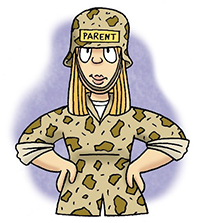
But others of you may agree with me that, during a crisis like this, there are simply (1) too many things we do that unnecessarily make matters worse, and (2) too many things we dont do that would make matters a lot better.
A shocking and stomach-churning time like the present requires extraordinary measures. It requires an unusual kind of new thinking and special kinds of new behavior. In The Coronavirus Manual for Parents , Ill try to explain exactly what Im talking about. Hopefully it will do some good. Stay tuned.
2
Is There Any Good News?

We have seen that in a crisis like this coronavirus epidemic, we are inundated with bad news that we uncritically accept because of our desire to fix the problem, our obsessive tunnel vision, the medias ability to find and repeat awful news, and the ease with which we can get information (electronic addictions). The result of this is an overall feeling that we could easily all die soon and theres little we can do about it. This depresses us adults and frightens our kids.
The Coronavirus Manual for Parents is about maximizing our physical and mental well-being in the face of this crisis. How we feel depends a lot (in fact, almost entirely!) on what we think. Are we thinking correctly about the coronavirus? The answer is definitely a resounding No. In this chapter, well attempt to get back some perspective on this problem so we can calm down some, behave more rationally, and reassure our children.
Lets be clear here. Is there a big problem? Yes. Are we thinking about it reasonably? No.
Heres an example: headlines. Headlines are known for startling and what mental health professionals often refer to as awfulized thinking. The information headlines provide can be quite true, but the negative emotional power comes from things like the selection of the topic, the type size, the repetition of the topic, and often the phrasing. Here are some recent examples:
Dreaded First Death in the State
This Virus Knows No Bounds
12 New Coronavirus Cases Found
New York Neurosurgeon Has Coronavirus
How Long Will Schools Be Closed?
If youre a six-year-old, how are you going to feel after reading these statements?
Another Look at the Facts: Do the Math
Italy has been in the news a lot recently as an example of a country hard hit by the coronavirus. Open a newspaper or internet browser, and youll see headlines like:
Italy coronavirus deaths rise by record 475 in a day
Worst national crisis since World War II
More than 10,000 people have now died
Travelers should avoid all contact with sick people
Nurse says, Ive never seen so many people die together before my eyes
Nothing good about this situation. Tragic, sad. Is there any good news? Yes there is, but be prepared to jump on me after I tell you what it is.
If I asked you, based on what youve heard and what you know, what percentage of the population of Italy has already contracted coronavirus, what would you say? We asked five people, and here are the answers we got: 16%, 10%, 60%, 3%, and 15%. If you averaged all these guesses, it would look like this:
Total population of Italy: 60,317,546
Estimated % of population with virus: 20.8%
Number of persons diagnosed with virus: 12,546,049
Now, lets look at the actual numbers (as of April 1, 2020, based on data from the United Nations and Johns Hopkins University):


